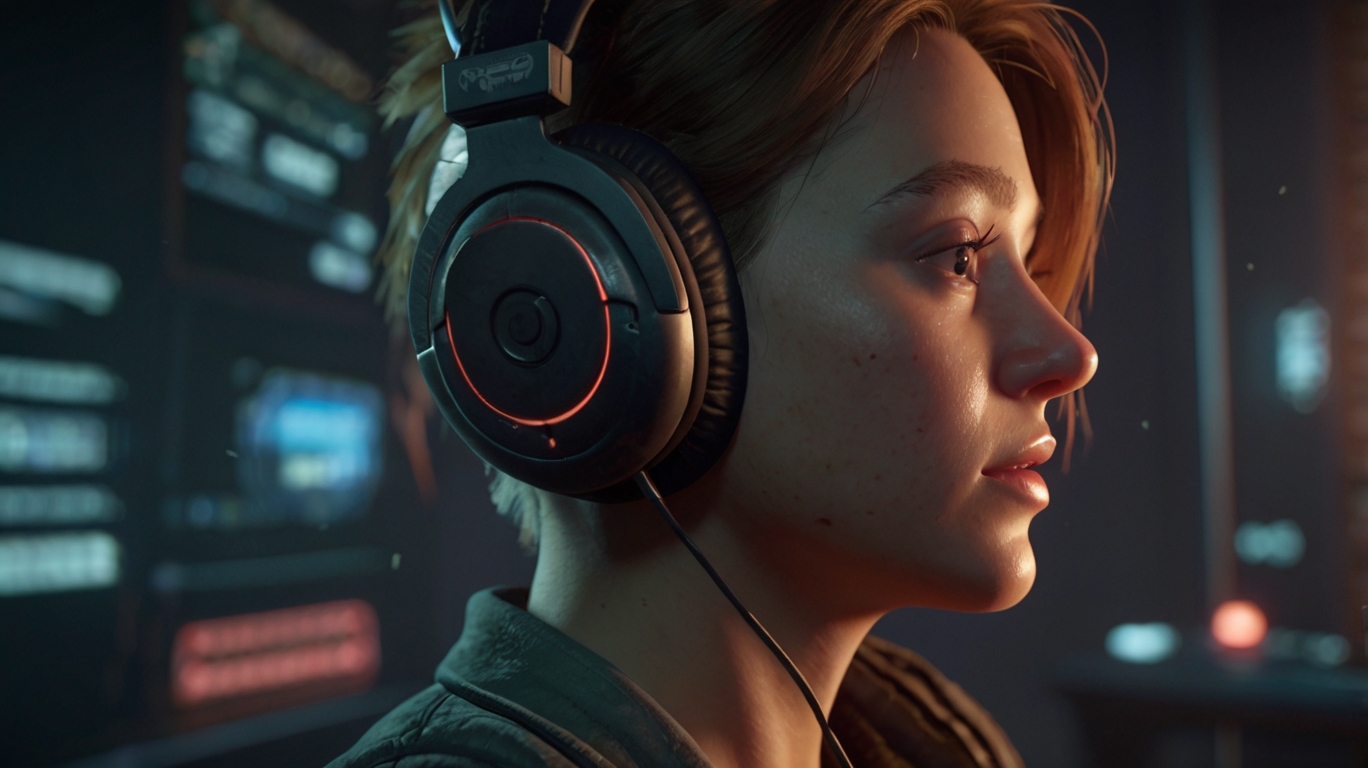
Sound design is an important aspect of game development that shapes the player’s perception, engagement, and emotional response to the game world. A good selection of sounds improves the believability and emotional depth of the game. This article explores the key elements, techniques, and sound design examples that contribute to a memorable gaming experience.
Understanding Sound Design
Game sound design is the art and science of creating sound elements that match the visual and interactive components of a game. This includes creating sounds for various elements of the game, from character actions and environments to user interfaces and narrative cues. Good sound design guides players through their gaming experience subtly or powerfully by reflecting what they see and feel.
Key Elements of Sound Design
- Ambiance and Environmental Sounds: These sounds create the atmospheric layers of the game, immersing players in the world’s environment. They include sounds like rustling leaves, distant animal calls, or urban noises, which make environments feel alive.
- Foley and Character Sound: Character sounds, such as footsteps, breathing, and vocal reactions, add personality and believability to the protagonist and NPCs. These sounds also provide cues about the characters’ emotional states or health conditions.
- User Interface (UI) Sounds: Audio feedback in the UI, like button clicks and selection noises, makes interaction smoother and more intuitive, adding a tactile quality to game mechanics.
- Music and Score: Music is vital for setting the tone and mood. Well-crafted scores enhance the narrative and can heighten the emotional impact, especially in intense or suspenseful scenes.
- Dynamic and Interactive Sounds: Sounds that respond to player actions or change based on environmental cues elevate the immersive experience, as players feel their actions affect the game world.
The Process of Sound Design Creation
- Conceptualization: Sound designers begin by understanding the game’s visual style, narrative, and emotional goals to define an audio direction that complements the game’s overall aesthetic.
- Recording and Foley Creation: This involves capturing sounds either in the field or in a studio, where Foley artists create sounds that fit specific in-game actions and environments.
- Sound Editing and Mixing: Sound engineers refine, edit, and mix these sounds to ensure clarity, consistency, and balance. To improve realism, they might also apply effects like EQ changes and reverb.
- Implementation: The final sound assets are integrated into the game engine, where they’re programmed to react dynamically to player actions or environmental changes.
Importance of Immersive Sound
Sounds and music deepen the connection between the player and the game world, evoking emotions and warning about the situation in the game. For instance, players may experience heightened anxiety or a sense of urgency during a violent storm that features thunder and howling winds. Additionally, the sound alerts players to any dangers or openings like the howl of a hidden monster in the distance or the footsteps of an attacker approaching.
Immersive Sound and a Believable Game World
The game world is truly immersive when the audio seamlessly blends with the visuals to create a cohesive experience. For instance, players can imagine themselves in a forest with rustling leaves, chirping birds, and far-off animal calls. Without these sounds, the game world can feel empty without fully capturing the player’s imagination.
Techniques in Immersive Sound Design
- 3D Spatial Audio: 3D audio creates a sense of space, positioning sounds in a three-dimensional field to give players a sense of direction and distance. This is essential in first-person shooters (FPS) and horror games where players rely on sound for situational awareness.
- Adaptive Music: Music that shifts dynamically with gameplay adds an emotional layer to experiences. For instance, tense music building up during enemy encounters heightens the excitement, while calming music in exploration scenes enhances relaxation.
- Reverb and Acoustic Simulation: Simulating how sounds travel in different environments (such as echoing in caves or dampening in forests) adds realism and helps players feel grounded in the game world.
- Layering Sounds: Layering different sound elements creates richness and variety. In a busy marketplace, for example, players might hear overlapping sounds of chatter, footsteps, and distant music, each contributing to the bustling atmosphere.
Examples of Games with Outstanding Sound Design
- The Last of Us Part II: This game excels in using subtle, realistic sounds that convey emotion and heighten tension. Environmental and character sounds blend seamlessly with adaptive music, creating a visceral experience.
- Hellblade: Senua’s Sacrifice: Featuring 3D binaural audio, this game uses sound to depict the protagonist’s mental state. Players hear voices around them as if they’re in Senua’s mind, which contributes to a psychologically immersive experience.
- Red Dead Redemption 2: The game’s sound design captures the essence of the Wild West, with detailed environmental sounds, animal calls, and dynamic music that responds to gameplay.
- Resident Evil Village: This game masterfully uses sound to build suspense, with echoing footsteps, eerie background music, and realistic environmental effects that create an unsettling atmosphere.
Conclusion
Sound design plays a key role in creating unforgettable gaming experiences. Players are captivated by the believable setting of the game and the emotional depth and atmosphere created by the sounds and music. To create audioscapes that are more than just background noise, but an important part of player immersion and storytelling, sound designers use techniques such as layering, responsive music, and 3D spatial audio. The potential for immersive gaming audio will only grow as technology advances, making sound design an effective strategy for engaging players on a deeper level.




